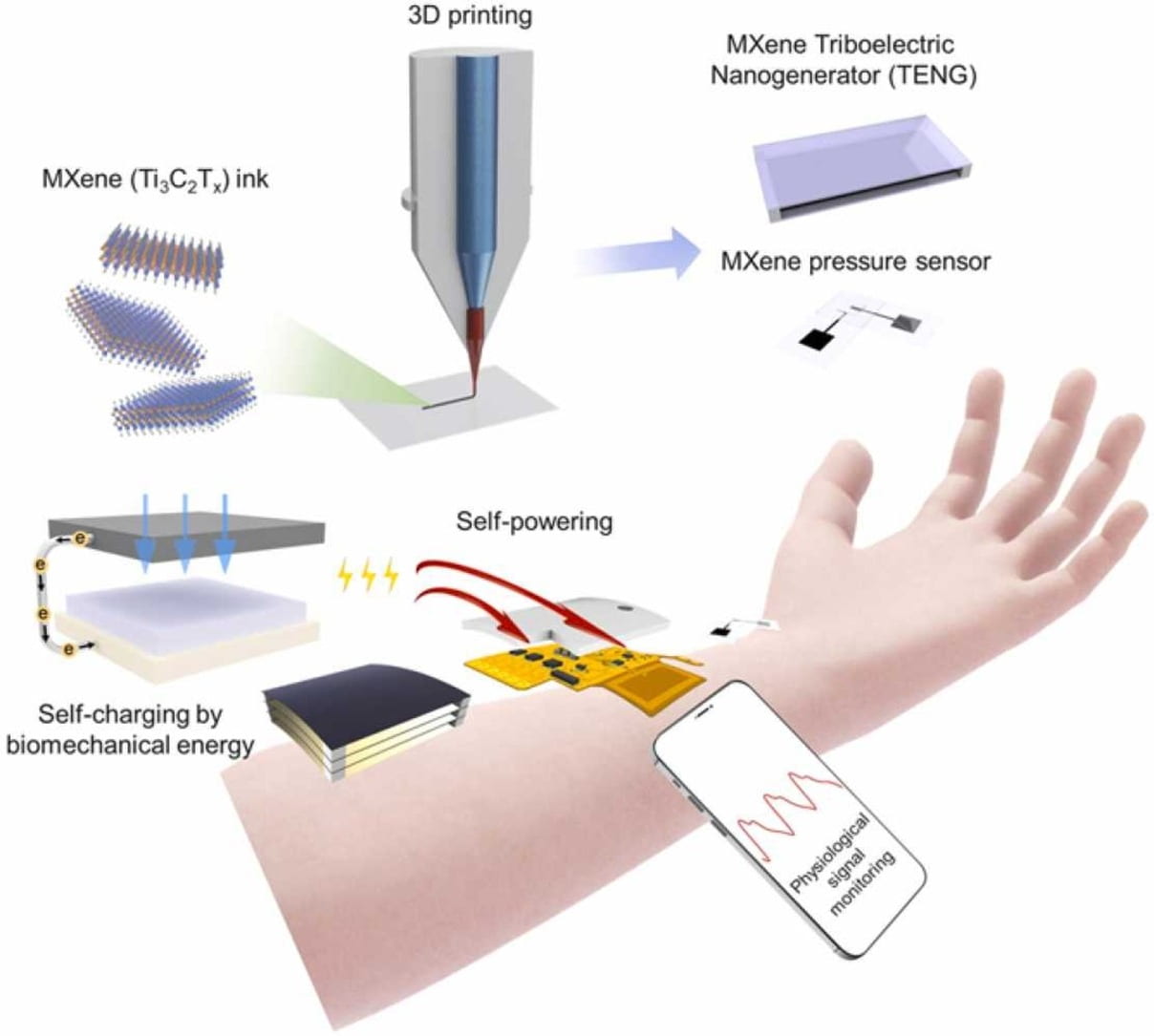UCI researchers invent a health monitoring wearable that operates without a battery
Biosensor continuously tracks pulse and wirelessly communicates with nearby devices

Irvine, Calif., July 12, 2022 – A new self-powered, wristwatch-style health monitor invented by researchers at the University of California, Irvine can keep track of a wearer’s pulse and wirelessly communicate with a nearby smartphone or tablet – without needing an external power source or a battery.
In a paper published recently in the journal Nano Energy, team members in UCI’s Henry Samueli School of Engineering describe their invention, built via 3D printing of nanomaterials on flexible substrates for real-time and wireless monitoring of vital signs. The current prototype serves as a self-powered radial artery pulse monitor, but other aspects of health – such as heart rate, body temperature or blood pressure – can be gauged by simply changing the sensor circuitry, according to the paper’s authors.
“Imagine you’re out working in a remote location – anywhere, the desert on a mission, in mountains hiking or even a space station, for example – and you need to keep track of your health information on demand, or there’s an incident, and you need to monitor someone’s vital signs urgently and accurately. This self-powered and wireless device allows you to do that without relying on a battery that can lose its charge and has the thermal runaway issue [overheating of lithium-ion batteries that can lead to combustion],” said senior co-author Rahim Esfandyar-Pour, UCI assistant professor of electrical engineering and computer science and biomedical engineering.

The device delivers health information in two ways. In one mode, the energy created by tapping the wristband’s nano energy generators powers up the sensor circuitry, and soon the wearer’s pulse rate appears as flashing signals on an LED display. The second mode works when a smartphone or similar device is held near the wearable. Embedded near-field communication technology facilitates the wireless exchange of both power and data between the wristband and the mobile device, and biophysical information is plotted and displayed on the smartphone’s screen.
The on-demand and self-powered characteristics of the invention are made possible by triboelectric nanogenerators that produce voltage through mechanical thumping or pressure. The TENGs are fabricated using titanium-based MXenes, a relatively new class of ultrathin 2D material with unique electrical and mechanical properties. Only a few atoms thick, MXene layers are bendable, are stretchable and can be printed onto the surface of flexible, bandage-like material or a wearable arm- or wristband.
“This innovation achieves many significant outcomes in one package,” Esfandyar-Pour said. “It enables continuous, battery-free, wireless and on-demand health monitoring anytime and anywhere. It’s made with low-cost and flexible materials and can be tailored to meet a variety of wearable bioelectronic sensors’ requirements. It’s a flexible, completely configurated system.”
Additional authors on the paper are Prativa Das and Sang Won Lee, UCI postdoctoral scholars in electrical engineering and computer science; and UCI Ph.D. students Qian Yi, Xiaochang Pei and Huiting Qin. Funding was provided by The Henry Samueli School of Engineering.
About UCI’s Brilliant Future campaign: Publicly launched on Oct. 4, 2019, the Brilliant Future campaign aims to raise awareness and support for UCI. By engaging 75,000 alumni and garnering $2 billion in philanthropic investment, UCI seeks to reach new heights of excellence in student success, health and wellness, research and more. The Henry Samueli School of Engineering plays a vital role in the success of the campaign. Learn more by visiting https://brilliantfuture.uci.edu/the-henry-samueli-school-of-engineering
About the University of California, Irvine: Founded in 1965, UCI is the youngest member of the prestigious Association of American Universities and is ranked among the nation’s top 10 public universities by U.S. News & World Report. The campus has produced five Nobel laureates and is known for its academic achievement, premier research, innovation and anteater mascot. Led by Chancellor Howard Gillman, UCI has more than 36,000 students and offers 224 degree programs. It’s located in one of the world’s safest and most economically vibrant communities and is Orange County’s second-largest employer, contributing $7 billion annually to the local economy and $8 billion statewide. For more on UCI, visit www.uci.edu.
Media access: Radio programs/stations may, for a fee, use an on-campus ISDN line to interview UCI faculty and experts, subject to availability and university approval. For more UCI news, visit news.uci.edu. Additional resources for journalists may be found at communications.uci.edu/for-journalists.


